If you're unfamiliar with what LinkedIn Analytics is, it's where you get all the info you could ever want about your audience or yourself. It includes metrics like demographics and interests that can help you make better decisions when building content, as well as how they found out about you online so they can learn more about who they are.
1. Listen to what your target audience is saying
You might not be able to track exactly who's saying what, but you can find out where they are talking about you and your business. If the biggest platforms for discussing your niche are Twitter, Facebook, and Google+, you'll be able to find out who in the general public is sharing those posts or comments. You can also see where customers have searched for your industry or company information. Even if they're not searching on LinkedIn, they might still be interested in these things and know how to find them if they want to.

2. Know your top competitors
You can find out where your competitors rank among your target audience. If they rank high enough, you might want to take some time to learn more about them and see how they're doing things differently. Look at their most popular posts, events, and jobs they are hiring for, as well as their brand voice (the tone and personality that you can hear in their content). You don't want to copy them completely, but you can get some good ideas for how you could engage with potential customers this way.
3. Learn about what kinds of profiles are most popular
People use LinkedIn depending on what stage of the company lifecycle they're in. Their profile might be a basic one with their name and a photo, or it might include everything from work experience to their favorite charity. Some target audiences use LinkedIn primarily for recruitment and networking, while others are more focused on career development. Knowing the different profiles among your prospects will help you decide what kinds of content to create.
4. Find out where people are talking about your industry
If you have questions about how competitive a specific job market is in your business area, look at which employers rank high in LinkedIn conversation stats among your potential customers. You can also see which industries have the most active groups on LinkedIn that might be good places to connect with others looking for advice or information on specific topics like technology, finance, or marketing.
5. Focus on your top customers
If you have a special offer for people who purchase a particular product or service, it could help you build your email list and engagement on the platform. LinkedIn has built-in ways to track this data, so you can benchmark your competitors and see how many people have signed up for your product or service. A great way to use this is by setting up a unique discount code that's only available if someone signs up for your newsletter. Creating an event for them to join can be another good way to showcase the value that you're providing.
6. Find out where your customers are most active
Are you looking for ways to reach a specific potential customer? Look at the groups or events they are involved in and see if you can get involved. You can start a discussion there or even host your event. Giving people something to talk about is one of the best ways to engage with them on LinkedIn.
7. Learn more about your employees
It's pretty easy to know how much of your time is spent on things that relate to your jobs as a company, but it's also important to know what kinds of skills and knowledge each employee has. Please find out how often they're in demand and how many people hire them. Try to learn more about their skills as well. If they're looking to build on a particular skill set, check out websites like LinkedIn Learning to see if there are courses you can offer.
8. Find problems in your niche and solve them
Sometimes, you can learn more about your customers by seeing what's going on in their lives. If you notice that people are posting about a particular problem, try to create content that offers solutions. You could also start a group and see if anyone else is having the same problem or asking questions about it. LinkedIn groups are ideal spaces for this kind of marketing.

9. Find out how well ads are working
If you've been paying for ads on LinkedIn, you can check to see how effective they have been in creating engagement and leads for your business. It is a great way to ensure you're getting your money's worth. You might even find that advertising is not the best use of your marketing budget for that month so that you can allocate those funds elsewhere.
10. Identify how people find you online
Are people searching for your company on Google? Or are they looking for content on specific keywords? LinkedIn Analytics has this information and more so that you can see how they found out about your business and what they want to know when they're ready to buy whatever it is you're selling.
Both men and women between the ages of 25-65 are entrepreneurs, business owners, and CEOs are the perfect target.LinkedIn is one of the best platforms to grow your business and build knowledge of your niche market. It's not just a social network; it's an online resource hub where you can share content and articles and learn more about your industry.






















.png)



.svg)




